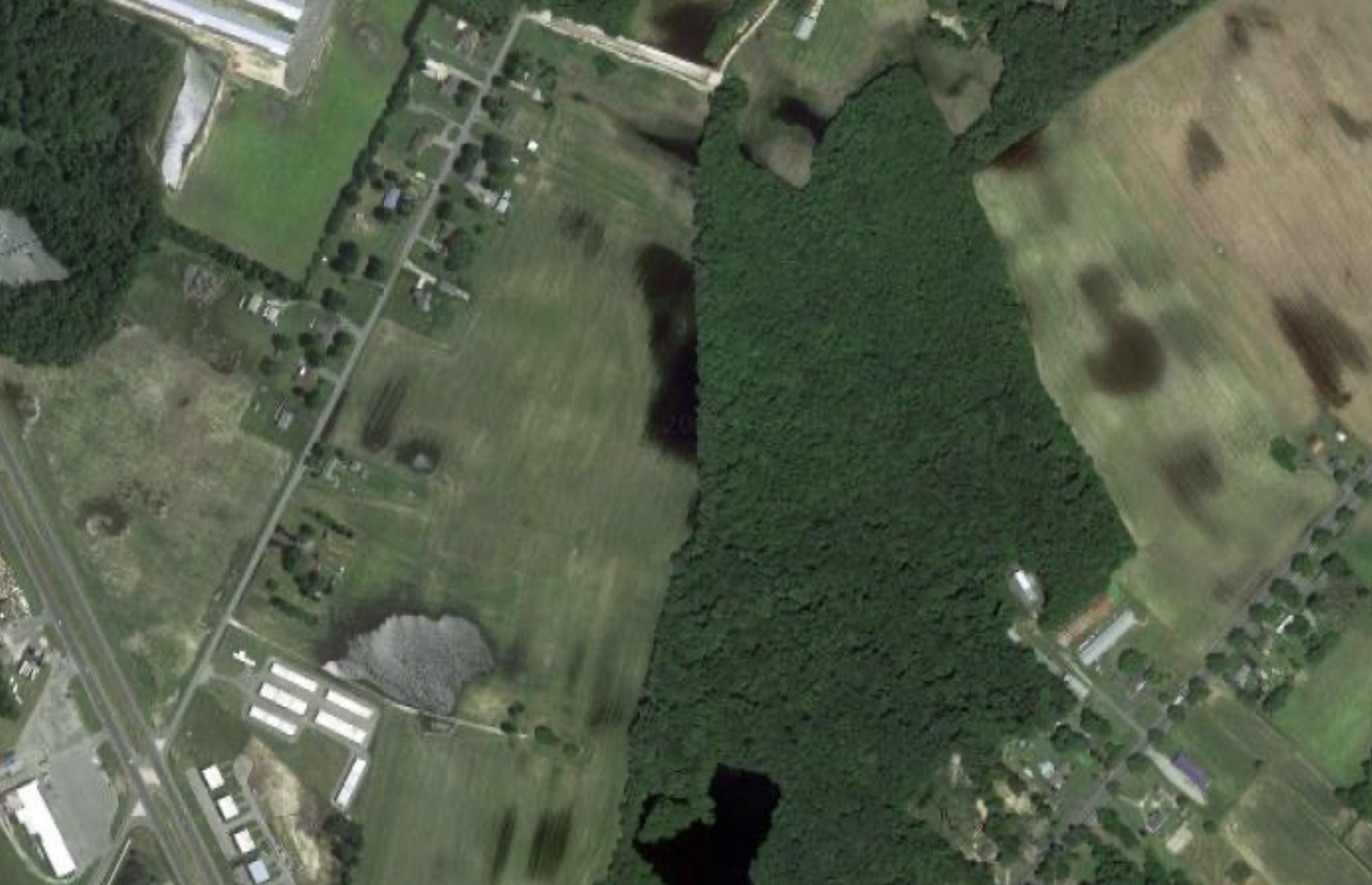Laurel is going to grow whether it wants to or not

Development is coming as rural living heats up
By Tony Russo
The last two proposals for a development along Discount Land Rd. in Laurel, Del. collapsed, but after a sometimes-contentious hearing at the Planning and Zoning Commission meeting, it looks as if the third time may very well be the charm.
A proposal by Wilmington-based developer Louis Ramunno would add 410 new residences in the 77 acre-area bound by Route 9 and Discount Land Road on the Route 13 northbound side. The working proposal includes a plan to add 63 single-family homes, 179 townhouses and 168 condominiums.
Most of the residents who turned out for the recent commission meeting didn’t take the news well, and those who did were skeptical at best about what the future Laurel would look like. Even though the best-case scenario wouldn’t have shovels in the ground before mid-2022, the attendees worried about how so many new homeowners, and their children, and their cars would integrate into a community that already struggles to spur economic development.
Laurel Fire Chief Jeff Hill, who has already shared his professional concerns with the commission, worried over whether the proposed development would be classifiable as Section 8, or low-income housing (often referred to as “affordable housing”).
“We have three low-income places in this town and they are killing us,” he said.
Ramunno assured him that wouldn’t be the case with the proposed housing. While there’s no telling exactly what the housing market will look like by the time the first houses are on the market, homes of the type he plans sell now in the $200,000 to $300,000 range.
The community will be structured as a Home Owners Association (HOA), which means maintenance fees on top of taxes. It will have private amenities, like a pool or tennis court, for which the HOA members will be solely responsible. It will also have individual governance for community affairs that will not affect the town of Laurel proper.
Those are distant-future concerns, however. The dominant themes had to do with traffic, potential land seizures, hospitals, schools and emergency services, top-of-mind worries for a small town hesitant about getting too big too fast.
Don't miss any of our coverage: Subscribe to the Delaware Independent
Discount Land Road could be the next big snag
There is no real question about whether Laurel will allow development along Discount Land Road. This specific tract has been designated for development as part of the town’s comprehensive plan for growth, meaning the town has agreed in principle that it should be developed.
In fact, over the years several attempts to execute the town’s stated vision for the area have fallen through.
The sticking point for the people who already live on Discount Land Road was the amount of work that would have to be done just to accommodate going from a few dozen homes to more than 400.
Unfortunately, the town doesn’t get to decide how that problem is solved; that is the purview of the Delaware Department of Transportation (DelDOT). The commission wasn’t certain whether the road-widening would have to cut into existing properties or if the state easements were sufficient for the required work.
Whichever the case, new home construction will radically transform an already problematic intersection. Hill noted that the intersection is a notorious accident hazard, and residents shared stories about the difficulties of navigating the turning lanes during the summer season when Route 13 is overburdened with traffic.
The current plan has Discount Land Road as the sole access point for the development, the only alternative being to deforest the south side of the property, which isn’t a viable ecological or economic option.
In all likelihood, DelDOT will require a solution not radically different than the intersection of Route 20 and Route 13 in Seaford, or even the redesigned Route 9/Route 13 intersection just a block south in Laurel.

Health care, schools and EMS will bend before they break
While the if-you-build-it-they-will-come approach works for housing, community services work in the reverse. According to the commission the Laurel School District, Tidal Health and EMS all say they can accommodate growth.
Many attendees were concerned about emergency response in a community that is proposing to allow on-street parking. Ramunno said the streets would be 30 feet wide rather than the legal minimum of 24 feet, which comfortably accommodates parking on both sides of the street with plenty of room for fire trucks.
“We work with what we’re given,” Hill said of the fire and ambulance services. “We would figure it out as we went along.”
It wasn’t a comforting notion among the crowd. One commenter raised the specter of the recent murder of a police officer in fiscally stretched Delmar where the police department was working with what it was given.
Similarly, the largest elementary school and the town’s high school are relatively new and will have to make do if a population explosion makes them as crowded as the old schools they’ve just replaced.
There will be a lag time between when the new growth happens and when it begins to pay for itself. Several people worried about the tax implications, but a more pressing worry was whether the current socioeconomic infrastructure would be sufficient. After all, even if the town can hire more cops and EMTs, it can’t force hospitals to expand any more than it can force grocery stores and other retailers to build in town and ease pressure on current services.
Town Manager Jamie Smith as well as several commissioners appeared to take the concerns seriously, but this is one chicken-and-egg problem that is already out of the town’s hands. The real question isn’t about growth, it is about the extent to which Laurel will potentially benefit. If the town elects not to allow the expansion, the answer might be: not at all.
Growth is 'inevitable'
The central point that Ramunno made, one echoed by several of the supporting commenters, is that Laurel will have to pay for more police and EMTs one way or the other. The only question is whether the town is willing to expand its tax base to do it.
“The growth is going to come and if it’s going to be outside the town, the town has to pay for police and fire protection because they’re obligated to take those calls,” he said. “Builders like me don’t create demand; the demand exists regardless of what you or I do. It’s there.”
Although he doesn’t own any other property in the area, Ramunno was clear that allowing this development was the best option for the town as people abandon the more congested metropolitan areas for cheaper rural living.
“Greater unincorporated Sussex County is going to take (more development) if the town doesn’t take it,” he said.
Townhouse construction has resumed along the Maryland side of Route 13 north in Delmar, and all along the Route 13 corridor through Seaford there are the stirrings of another building boom. If a similar project were approved in the Laurel region, but out in the county instead of in town limits, taxpayers would feel the burden without the benefit of an expanded tax base.
Laurel in the new economy
A common concern beyond where new residents would shop and seek medical treatment was where they would work. Ramunno said he suspected that tax-friendly Delaware would attract retirees.
Although it is a much larger project, Heritage Shores in Bridgeville benefited from the fact that Delaware doesn’t tax portions of retirement income.
Beyond the retirement crowd, though, new development in Laurel could benefit from the uptick in telecommuting ushered in by the pandemic. In a post-COVID working world, many people who didn’t need to go to the office have elected not to go back. The pandemic may not have killed the idea of the morning commute, but millions of people have been relieved of that burden. Those people also are looking for less expensive places to live and driving up rural housing prices all over the country.
Moreover, recent legislation provides money and incentives for infrastructure improvements to accommodate economic growth. Last month Gov. John Carney signed a bill to help shovel-ready projects get off the ground in the state’s more rural areas.
The concerns were about more than just growth. They touched on the way the town has and continues to approach economic development and the concern that, while large parts of the urban center fall into decay, the solutions are outward-facing.
Reimagining Laurel
As Hill mentioned when raising concerns about low-income housing, the town’s urban core struggles with vacant and dilapidated homes and storefronts. Re-Imagine Laurel was to be the cure for that. The Laurel Redevelopment Corporation (LDC) has been promoting a downtown revival of The Ramble, a proposed riverside mixed-use development that will incorporate eco-tourism. The movement may have lost some traction in recent years, but the LDC continues to promote the notion that the downtown can be saved.
Unfortunately, the downtown’s problems haven’t abated and, to the outside eye, downtown Laurel looks like a city in transition, though the arc of that transition is in no way clear.
The criticism many residents raised about the planned Discount Land Road development was that, if people didn’t want to move into the vacant houses available all throughout Laurel (more than 100 in town according to home sales sites), they wouldn’t want to move into new houses farther away from the city center.
That may very well be the case. As Rumanno put it, the market will have to decide. He estimated that, if approved, construction would be limited to 50 or so homes at a time as demand dictates. In the meantime, the ancillary questions about traffic, parking, infrastructure and education will be investigated by the various state agencies. Given the state’s commitment to funding growth and the town’s comprehensive plan, the question of development may be all over but the shouting.
The mayor and council are expected to take up the issue at their Sept. 20 meeting.
More stories:
Speakers denounce mask mandate at Woodbridge school board meeting, but the tone stays civil
This week in southern Delaware: Stories on development, and local news and events